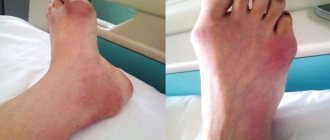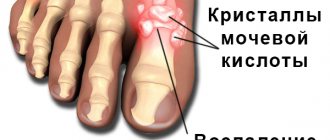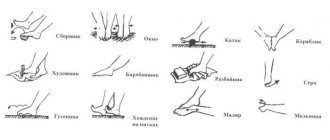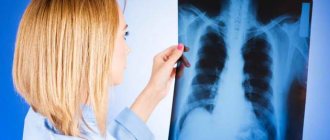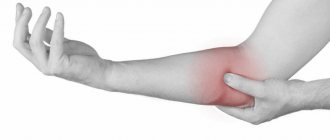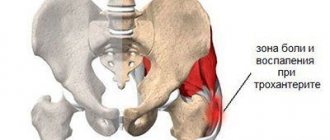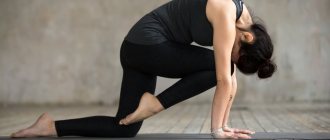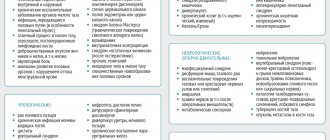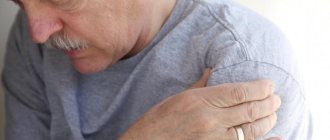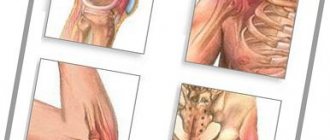What is Achillodynia and how does it develop?
Achillodynia
is a pain syndrome resulting from inflammation of the Achilles tendon and its surrounding membranes.
The disease usually develops after excessive
exercise. Unprepared people often suffer from Achillodynia after overly intense training. This applies not only to running disciplines, but also to other sports.
Overweight people
also often have problems with the Achilles tendon.
Rheumatism
and
foot deformities
increase the risk of developing Achillodynia.
Causes
Signs and symptoms
Treatment
Products
Anatomy
Being the most powerful tendon in the human body, the Achilles tendon (lat. tendon Achillis
) transfers the force of the lower leg muscles to the foot. This ensures the foot lifts off the surface when walking and running. When you run, the Achilles tendon experiences a force equal to eight times your own body weight.1
Anatomy of the Achilles tendon
Risk factors and causes
The main cause of Achillodynia is overstretching the Achilles tendon. At the same time, activities that can cause pain are very diverse.
Sports activities
- Intense running and jumping loads
- Unusual loads, for example too much load after starting to play sports
- Systematic overloads
External factors
- Inappropriate shoes
- Smoking
- Taking certain antibiotics
Anatomical factors
- Aging
- Foot deformities
- Shortening of tendons or muscles
- Increased uric acid levels
- Rheumatic diseases
- Excess body weight
Signs and symptoms
The clinical picture varies from discomfort to inflammation of the Achilles tendon. In some cases, inflammation can cause actual rupture. Characteristic symptoms of inflammation: pain, local increase in temperature, swelling and dysfunction
.
At first, symptoms appear only at the beginning of physical activity and disappear after a short period of activity. In the future, pain and swelling persist for a long time.
Treatment of Achillodynia
Treatment of Achillodynia is almost always conservative.
. The earlier treatment begins, the more successful it is. The most effective is complex treatment, which consists of the points listed below.
- Therapeutic exercise:
special eccentric exercises2 help rebuild tendon tissue. It is recommended to do the exercises for a few minutes twice a day. Depending on the clinical picture and phase of the disease, the doctor may prescribe physiotherapy (ultrasound), electrotherapy (TENS), transverse kneading (special massage), shock wave therapy or acupuncture. - Bandages:
Special medical devices (eg Achimed by medi) reduce tension and stress on the Achilles tendon. The compression fabric and the built-in silicone insert together provide a gentle massage effect on the Achilles tendon and improve blood circulation in the area of inflammation, which reduces pain. Additionally, in the acute phase, patients can reduce their Achilles tendon pain by using heel pads that are used simultaneously in both shoes. - Insoles:
Orthotics (such as igli Heel Spur Light) reduce stress on the Achilles tendon. - Cold
: cooling compresses relieve pain and swelling (compress temperature is about 7°C). - Heat
: A heating pad, hot water bottle or massage with a towel soaked in warm water will improve blood circulation in the area of inflammation. - Medications
: If necessary and as recommended by the treating physician, patients take anti-inflammatory drugs such as ibuprofen or diclofenac for one to two weeks. - Ointments
: Anti-inflammatory creams or ointments can be rubbed onto the affected area several times a day.
The treatment plan is drawn up by the attending physician individually for each patient. This takes into account the special needs of the patient and the clinical picture at the current time.
Physiotherapy
Eccentric exercises2 are an effective method for treating Achillodynia. This has been proven by various studies3. Among similar exercises are calf raises
considered basic.
The exercise should be performed twice a day for at least 12 weeks.
The exercise can be performed on a step (such as a staircase) and does not require fitness equipment.
It is important to know:
During the first two weeks of exercise, pain in the lower leg muscles may occur. Be patient and continue the exercise faithfully. If the pain becomes too severe, reduce the number of sets. If this does not relieve pain, and if you experience pain during daily activities, stop exercising and contact your healthcare provider.
Causes of heel pain
The heel is the part of the leg that bears a tremendous load. At a young age, it hurts, usually after an injury. In the elderly, this is facilitated by the loss of elasticity of tissues and their pathological fragility.
There are circumstances in which heel pain should not be a cause for concern. This happens, for example, after a long walk:
- if the unusual load occurred against the background of physical inactivity;
- when wearing uncomfortable shoes;
- after a long climb uphill or up stairs.
If after a long walk the sensations in the heel are too painful and sharp, swelling, hematoma, tissue hyperemia has appeared, it’s time to think about it. Most likely, the leg needs medical attention.
A little pain in the heel after a long walk is normal.
Diagnosis for foot pain
Diagnosis of foot pathologies begins with interviewing the patient. The doctor asks how often the patient is bothered by unpleasant sensations, after which they appear, and to what he associates the onset of pain. If the survey revealed that there was a leg injury, fractures and dislocations should be excluded. To do this, an x-ray of the bones of the foot is performed. If the patient is overweight or indicates frequent physical activity, you should pay attention to the patient’s gait. In this case, plantar fasciitis is often diagnosed. A heel spur is identified on an x-ray. Vascular diseases are diagnosed using ultrasound of the arteries and veins of the lower extremities. Nerve pathologies appear when pressure is applied to certain areas of the foot. Calluses and ulcers on the feet indicate wearing tight shoes.
Clinical picture of foot diseases
In addition to foot pain, each of the diseases mentioned above is accompanied by a number of other symptoms. Inflammatory processes in the muscles are manifested by redness and swelling of the leg. If the pain is caused by a pinched nerve of the foot, then the patient may experience discomfort in the form of “shooting” in the arch of the foot or sole. Bone injuries are always accompanied by limited movement. When a heel spur appears, pain accompanies every contact of the sole with the surface. You can also feel a hard formation if you press on the foot. When the joints are dislocated, a protrusion appears on the back side. Arthritis of large and small joints of the foot is characterized by signs of inflammation. Among them: swelling, hyperemia and increased temperature at the site of the lesion.
Flat feet and foot pain
Another cause of pain is flat feet. This pathology is often asymptomatic, but is sometimes accompanied by unpleasant sensations. The mechanism of development of this disease is the lowering of the arch of the foot down towards the sole. Most often, this pathology occurs in childhood, when the leg is just developing. However, pain in the foot between the heel and toe with flat feet can also appear in an adult. Provoking factors are obesity and physical activity. Calcium deficiency in osteoporosis also contributes to the development of pathology.
Traditional medicine against foot pain
In addition, you should use traditional methods to relieve pain in the foot between the heel and toe. Treatment with infusions and decoctions will not get rid of the cause of the pathology, but will help relieve unpleasant symptoms. In addition to taking medications orally, it is recommended to make various lotions, as well as foot baths. They are made from leaves of linden blossom and mint (in equal proportions), nettle, and plantain. After infusion, the broth is poured into a basin of water, where the feet should be kept for about 15 minutes. These procedures help relieve inflammation and relieve pain. Compresses made from honey and raw potatoes are also used.
Pain in the foot between the heel and toe: how to treat the pathology?
The choice of treatment method depends on what is causing the foot pain. In cases where discomfort occurs only periodically or is associated with physical exercise, it is necessary to follow the correct regimen. First of all, it is important to pay attention to shoes. If it causes discomfort, then you need to change it. If you have flat feet, you need to purchase special orthopedic insoles. It is equally important to organize rest for your legs. To do this, it is recommended to reduce physical activity and eliminate running for a while. If these measures do not lead to a positive result, you should seek the help of a specialist. For injuries and heel spurs, you should visit a surgeon. After examining and identifying the cause, he will prescribe medication, and in some cases, recommend surgery. Sometimes the help of a neurologist is required. To relieve discomfort, painkillers are prescribed: Ketonal, Nise. For inflammation of the joints, medications “Artoxan” and “Diclofenac” are indicated. Treatment of neurological pathologies is carried out with the drugs “Melbek”, “Neurobeks”. Also, in some cases, massage procedures are necessary.
Relationship between foot pain and physical activity
Often, unpleasant sensations in the sole can be caused by physical activity. For example, after running or long walking, some discomfort occurs. The cause may be plantar fasciitis. That is, pain in the foot between the heel and toe after running occurs due to sprained ligaments. Sometimes it goes away on its own. But with constant physical activity, the ligaments do not have time to return to normal. In this case, fasciitis of the sole develops. In addition, pain after exercise can be caused by dislocations of the small joints of the foot. Another reason is inflammatory diseases of the ligaments and muscles. Also, unpleasant sensations often occur when blood circulation in the foot is impaired. Vascular lesions are often associated with varicose veins of the lower extremities and pathologies of the hematopoietic system.
Arthritis
Pain in the middle of the foot can be caused by a condition such as arthritis. This disease quickly affects areas where the bones are connected to each other. Therefore, the inflammatory process affects the joints of the sole, which provokes pain. Additionally, you may notice swelling of the soft tissue.
REFERENCE. With this rheumatoid disease, all small joints are affected. The disease becomes chronic. An aching pain appears, which bothers you at rest, and with even light exertion it intensifies even more. In the morning, stiffness of the foot occurs.
Other signs of the disease include:
- general weakness;
- increased fatigue;
- redness, swelling of the skin;
- heat;
- heel swelling;
- joint deformation.
Middle-aged women are more susceptible to rheumatoid arthritis. When this disease develops after an infection, then an uncomfortable spasm is felt in the very center of the foot and just above the heel.
With gouty arthritis, local metabolism is disrupted. This is facilitated by the accumulation of uric acid, which leads to the formation of crystals in the joint area. The painful spasm becomes paroxysmal. It waxes and wanes. Its intensity increases when you touch the foot. In the affected area, especially in the area of the thumb, swelling and redness are observed.
Osteoarthritis most often develops after injury. Pain between the heel area of the foot and its toe is felt even in a passive state. And with loads and movement it intensifies even more. At the same time, redness with swelling also appears. The temperature may rise.
Reactive arthritis occurs after an infectious process has occurred in the joints. Pain in the middle of the foot becomes constant. There is stiffness in movements. Painful areas turn red and become swollen.
Foot pain due to heel spurs
A heel spur is a hard lump that appears on the tendons of the foot. It consists of bone tissue. Having appeared, the spur begins to gradually grow. This disease is one of the most common causes of foot pain. A heel spur develops due to severe stretching of the plantar fascia. In addition, excess weight is considered to be the cause of its appearance. With a small size of the formation, the patient is bothered by pain in the foot between the heel and toe in the morning - after the person gets out of bed. Also, unpleasant sensations occur after sitting for a long time. When the heel spur has reached a large size, the pain is constant. It is present not only when standing up and leaning on the leg, but also when walking.
